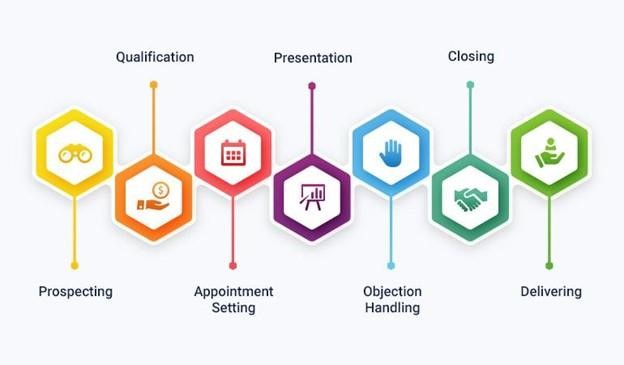
Closing deals is the ultimate goal for salespeople, but it’s not always easy. Deals can slip through your fingers for countless reasons, and sometimes it feels like no matter what you do, the prospect just isn’t ready to commit.
The good news? There are proven strategies that can help you not only close more deals but do so in a way that is authentic and customer-focused.
Here are six strategies to close more deals:
1. Understand the Buyer’s Journey
Before you can close a deal, you need to know where your prospect is in their decision-making process. Are they still gathering information? Comparing options? Or are they ready to make a decision? Tailoring your approach to their current stage shows that you understand their needs and builds trust.
Ask open-ended questions like, “What’s most important to you in choosing a solution?” or “How do you see this impacting your goals?”
These questions uncover valuable insights and move the conversation forward.
2. Focus on Solutions, Not Features
It’s easy to fall into the trap of talking about your product’s features, but prospects don’t care about bells and whistles—they care about solving their problems.
Shift the conversation to how your product or service addresses their pain points and delivers value.
For example, instead of saying, “Our software has a built-in analytics dashboard,” try, “Our analytics dashboard helps you track key metrics in real-time so you can make data-driven decisions faster.”
Customers are more likely to make a purchase when they clearly understand how a product or service will deliver personal value and meet their unique needs.
3. Create a Sense of Urgency
Sometimes, prospects linger in the decision-making stage longer than necessary.
Creating a sense of urgency can help them move forward, but it’s important to do this ethically. Highlight time-sensitive opportunities, such as limited availability or upcoming price changes, only if they’re genuine.
You might say, “We have a promotion running until the end of the month, and I’d hate for you to miss out on the savings.” But be careful not to overdo it—pressure tactics can backfire.

4. Handle Objections with Confidence
Objections are a natural part of the sales process. Instead of dreading them, view objections as opportunities to address concerns and build trust.
The key is to listen actively and respond thoughtfully.
For instance, if a prospect says, “This is too expensive,” don’t just defend your price. Dig deeper: “I understand—can you share more about your budget or what value you were hoping to see?” This approach allows you to explore their priorities and potentially reframe the value of your solution.
5. Ask for the Close—Clearly and Confidently
One of the biggest mistakes salespeople make is not asking for the close. It might feel awkward, but your prospect expects it. When the time is right, be direct and clear.
For example, “It sounds like this solution aligns with your goals. Are you ready to move forward?”
If they hesitate, don’t panic. Ask follow-up questions to understand their hesitation, and address those concerns on the spot.
6. Follow Up!
Not every deal will close on the first attempt, and that’s okay. A well-timed follow-up can make all the difference. Check in with additional information, address any lingering concerns, or simply remind them of the benefits of moving forward.
A quick email like, “I wanted to follow up and see if there’s anything else you need from me to make your decision,” keeps the conversation open without feeling pushy.

Closing more deals isn’t about being pushy or aggressive; it’s about understanding your prospect, addressing their needs, and guiding them toward a solution that benefits them. By focusing on these strategies, you can build stronger relationships, close more deals, and ultimately grow your sales success.
Which of these strategies do you plan to try first? To read more of KONA’s insights into Sales Closing Strategies, click here, and to read about how KONA’s sales training process stacks up against the Miller Heiman methodology, click here.
Contact KONA today to discuss our range of tailored Sales Training programs and the value they will bring to your Sales Team.
Call 1300 611 288 or email info@kona.com.au











































































